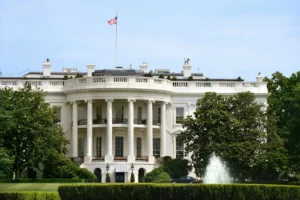By John Plassard, senior investment specialist at Mirabaud Group
COP 28 is taking place in very special circumstances: although the Paris Agreements gave rise to a great deal of hope, the withdrawal of the United States from the agreements and the recent war in Ukraine have led many countries to step up the use of fossil fuels such as coal.
Paradoxically, however, the war in Ukraine could accelerate the energy transition. Review, analysis and state of play.
The facts
After 2022, a year marked by extreme weather phenomena such as megafires in the Amazon, California and Greece, 2023 turned out to be even worse, with drought in North Africa and Europe, continued deforestation in the Amazon and flooding in Pakistan.
This is where the COP comes in, and the willingness (or lack of it) of governments to fight against global warming, whose impact is becoming more and more obvious, leading us to fear the worst for future generations.
There is, however, a light at the end of the tunnel, with the return of China, India and Brazil.
The question is, of course, whether this will have an effect.
What does COP mean?
COP stands for Conference of all Parties (or states) to the UN Framework Convention on Climate Change. Adopted in 1992, the UNFCCC recognises the existence of climate change and aims to stabilise greenhouse gas (GHG) emissions by proposing solutions through international cooperation. Since 1995, the signatory states have met once a year, in a different city, for a fortnight of discussions and negotiations on the climate. The aim is to find solutions to slow global warming and monitor the agreements that have been put in place. In theory, the aim of the COPs is to limit the anthropogenic (man-made) greenhouse gas emissions responsible for global warming.
What happened at COP27?
The COPs that followed the signing of the Paris Agreement in 2015 at COP21, which left a strong impression on people’s minds, did not have the impact hoped for. But there are some things we can take away from COP27.
That meeting was held from 6 to 18 November 2022 in Sharm el-Sheikh, Egypt.
It was marked by several important advances, including:
- The creation of a fund for loss and damage caused by climate change. The fund, with an initial amount of $100 million, will be designed to help vulnerable countries cope with the effects of climate change.
- A commitment by countries to step up their efforts to combat climate change. Countries have pledged to reduce their greenhouse gas emissions by 45% by 2030, compared with 2010 levels.
- Mobilising financing for the energy transition. Countries have pledged to raise $100 billion a year for the energy transition by 2023.
However, COP27 also saw disagreements, particularly on the question of apportioning responsibility for emissions and funding:
- The question of the distribution of responsibilities. Developed countries, which have historically been responsible for the majority of greenhouse gas emissions, are called upon to take more ambitious measures than developing countries.
- The question of financing. Developing countries are calling for greater funding to enable them to cope with the effects of climate change and implement energy transition measures.
Despite these disagreements, COP27 was considered a success by many participants. The conference enabled the negotiations on climate change to move forward and strengthened international mobilisation.
In 2009, the rich industrialised countries promised to grant $100 billion a year to the countries of the South from 2020. But this promise has yet to materialise.
How did we get to this point?
The United States has been the biggest cumulative polluter from 1850 to today. Russia was the second biggest polluter until 2007, when it was overtaken by China, whose emissions began to rise rapidly in the 1970s.
Carbon dioxide (CO2) remains in the atmosphere for centuries, and the cumulative amount of CO2 emitted is closely linked to the 1.2°C warming the planet has already experienced.
The UK was the third biggest polluter for a century, from 1870 to 1970, when it was overtaken by Brazil.
An analysis by Carbon Brief shows that around 85% of the combined emissions of the US and China come from the burning of fossil fuels, and 15% from deforestation, with the reverse being true for Brazil and Indonesia. Indonesia has made some progress in halting tree-cutting, but the felling of forests in Brazil is also a notable point.
The inclusion of emissions from deforestation has moved Australia from 16th to 13th place. It is estimated that Australia has lost almost half of its forest cover over the last 200 years. Australia’s emissions reduction pledge for COP did not increase its ambition and was judged “very inadequate” by the analysis.
However, it is useful to also look at the situation before the 1800s.
Few people know this, but when the Spanish conquered what is now South America in the 16th century, they seized the Inca mines and soon began pumping clouds of lead dust over the Andes. The silver the conquistadors sent home made them rich. It also made them the first industrial-scale polluters of toxic metals.
In 1572, the Spanish introduced a new technique called amalgamation, which enabled them to process even low-quality ores that contained much more lead than silver. This cold technique involved grinding the ore into powder, which could easily become airborne.
The journal Proceedings of the National Academy of Sciences believes that this explains the sudden and spectacular spike in lead concentrations in the ice core from this period onwards.
In fact, it’s quite difficult to agree on when man’s impact on the environment became significant enough to warrant an official change in scientific nomenclature.
Some attribute it to the beginning of agriculture 11,000 years ago, others to the advent of the nuclear age in 1945. But most agree that the Anthropocene began with the Industrial Revolution (1780-1830).
Which countries pollute the most?
Every year, more than 30 giga-tonnes of CO2 are released into the Earth’s atmosphere: this is the main source of the greenhouse gases that contribute to climate change. Most of these gases come from the use of fossil fuels, the production of energy using non-renewable sources and polluting human activities.
Most of this pollution comes from just a few countries: China, for example, generates around 30% of all global emissions, while the United States is responsible for almost 14%. In the ranking below, you will find the 10 countries that produce the most emissions, measured in millions of tonnes of CO2 in 2019 (reference date).
- China, with more than 10,065 million tonnes of CO2 emissions
- United States, with 5,416 million tonnes of CO2
- India, with 2,654 million tonnes of CO2
- Russia, with 1,711 million tonnes of CO2
- Japan, 1,162 million tonnes of CO2
- Germany, 759 million tonnes of CO2
- Iran, 720 million tonnes of CO2
- South Korea, 659 million tonnes of CO2
- Saudi Arabia, 621 million tonnes of CO2
- Indonesia, 615 million tonnes of CO2
Which energies are currently the most widely used?
We note that in 2019 (the pre-COVID reference year), almost 16% of the world’s primary energy came from low-carbon sources. Low-carbon sources are the sum of nuclear power and renewables – which include hydro, wind, solar, bioenergy, geothermal and wave and tidal. 11.4% came from renewables, and 4.3% from nuclear.
Hydroelectricity and nuclear power account for most of our low-carbon energy: together they represent 10.7%. Wind power produces only 2.2% and solar power 1.1%, but both sources are growing rapidly.
Although energy production from renewable sources is increasing every year, the global energy mix is still dominated by coal, oil and gas. Not only does most of our energy – 84% – come from fossil fuels, but we continue to burn more of them every year: total production has risen from 116,214 to 136,761 TWh over the last ten years.
How do you finance a solution?
The question of financing the solution to the problem is no less controversial, as is that of corporate involvement.
According to the New York Times, in the United States, John Kerry, President Biden’s climate envoy, is gathering support for a system in which governments earn credits for reducing emissions from their energy sectors, which companies can then buy to offset their own production.
Focusing the plan on credits is controversial, given criticism that they do not always reduce emissions. But they have gained popularity as a tangible way for companies and governments to incentivise carbon reduction.
The Financial Times says that Kerry’s plan lacks key details right now, although the Biden administration hopes to make an announcement at the summit.
Finally, companies’ commitment to combating climate change seems increasingly uncertain.
How can I invest in this theme?
There are, of course, several ways of investing in this (we hope) energy transition. We’ve touched on this aspect of the issue on many occasions, most recently when discussing solar panels (don’t hesitate to ask us for our study on the subject). While there are still a number of “problems” in this sector, the arguments in its favour are abundant.
For example, all new buildings in the European Union (EU) could be fitted with solar panels under plans to stimulate the search for renewable energies to replace the continent’s need for Russian oil and gas. The initiative is called RepowerEU and was presented on 18 May by the European Commission.
The European Commission would like half of the EU’s energy to come from renewable sources by 2030, more than double the current figure. The total cost of achieving this would run into hundreds of billions of euros but would be offset by an annual saving of €84 billion on fuel imports.
One of the proposals would be to introduce an obligation to install solar panels on the roofs of all new buildings and all existing buildings of energy performance class D or higher (the most energy-intensive).
The EU’s original plan to reduce carbon emissions to 55% below 1990 levels by 2030 included a 40% renewables target. But the war in Ukraine has prompted Brussels to seek energy independence from Russia, which accounts for 40% of the region’s gas and around 20% of its oil supplies.
Don’t hesitate to ask us for more information on the securities concerned.
Conclusion
To say that COP28 will be a game-changer would be to lie to you. However, without the COP process, many of us would be unaware of global warming. We absolutely must keep up the fight (and it is a fight) to avoid the worst for future generations.














